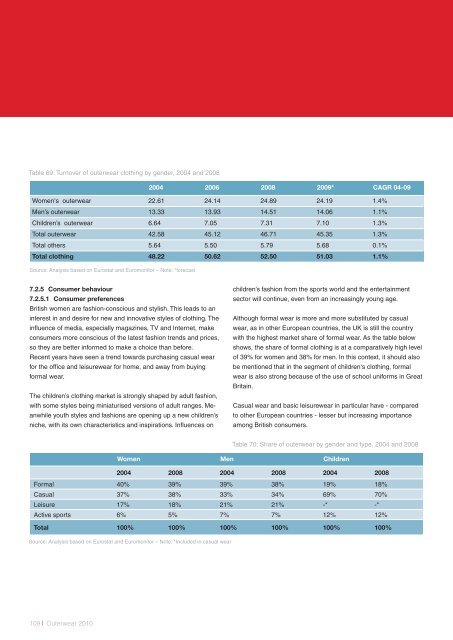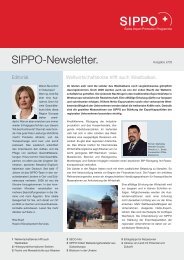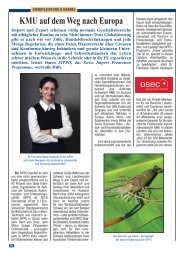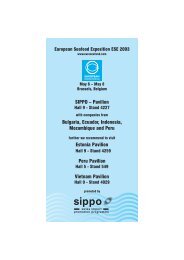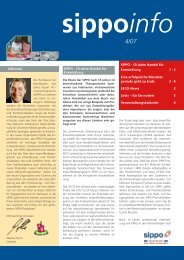Outerwear. - Business Location Switzerland
Outerwear. - Business Location Switzerland
Outerwear. - Business Location Switzerland
You also want an ePaper? Increase the reach of your titles
YUMPU automatically turns print PDFs into web optimized ePapers that Google loves.
Table 69: Turnover of outerwear clothing by gender, 2004 and 2008<br />
109 l <strong>Outerwear</strong> 2010<br />
2004 2006 2008 2009* CAGR 04-09<br />
Women‘s outerwear 22.61 24.14 24.89 24.19 1.4%<br />
Men’s outerwear 13.33 13.93 14.51 14.06 1.1%<br />
Children’s outerwear 6.64 7.05 7.31 7.10 1.3%<br />
Total outerwear 42.58 45.12 46.71 45.35 1.3%<br />
Total others 5.64 5.50 5.79 5.68 0.1%<br />
Total clothing 48.22 50.62 52.50 51.03 1.1%<br />
Source: Analysis based on Eurostat and Euromonitor – Note: *forecast<br />
7.2.5 Consumer behaviour<br />
7.2.5.1 Consumer preferences<br />
British women are fashion-conscious and stylish. This leads to an<br />
interest in and desire for new and innovative styles of clothing. The<br />
influence of media, especially magazines, TV and Internet, make<br />
consumers more conscious of the latest fashion trends and prices,<br />
so they are better informed to make a choice than before.<br />
Recent years have seen a trend towards purchasing casual wear<br />
for the office and leisurewear for home, and away from buying<br />
formal wear.<br />
The children’s clothing market is strongly shaped by adult fashion,<br />
with some styles being miniaturised versions of adult ranges. Meanwhile<br />
youth styles and fashions are opening up a new children’s<br />
niche, with its own characteristics and inspirations. Influences on<br />
children’s fashion from the sports world and the entertainment<br />
sector will continue, even from an increasingly young age.<br />
Although formal wear is more and more substituted by casual<br />
wear, as in other European countries, the UK is still the country<br />
with the highest market share of formal wear. As the table below<br />
shows, the share of formal clothing is at a comparatively high level<br />
of 39% for women and 38% for men. In this context, it should also<br />
be mentioned that in the segment of children‘s clothing, formal<br />
wear is also strong because of the use of school uniforms in Great<br />
Britain.<br />
Casual wear and basic leisurewear in particular have - compared<br />
to other European countries - lesser but increasing importance<br />
among British consumers.<br />
Table 70: Share of outerwear by gender and type, 2004 and 2008<br />
Women Men Children<br />
2004 2008 2004 2008 2004 2008<br />
Formal 40% 39% 39% 38% 19% 18%<br />
Casual 37% 38% 33% 34% 69% 70%<br />
Leisure 17% 18% 21% 21% -* -*<br />
Active sports 6% 5% 7% 7% 12% 12%<br />
Total 100% 100% 100% 100% 100% 100%<br />
Source: Analysis based on Eurostat and Euromonitor – Note: *Included in casual wear


